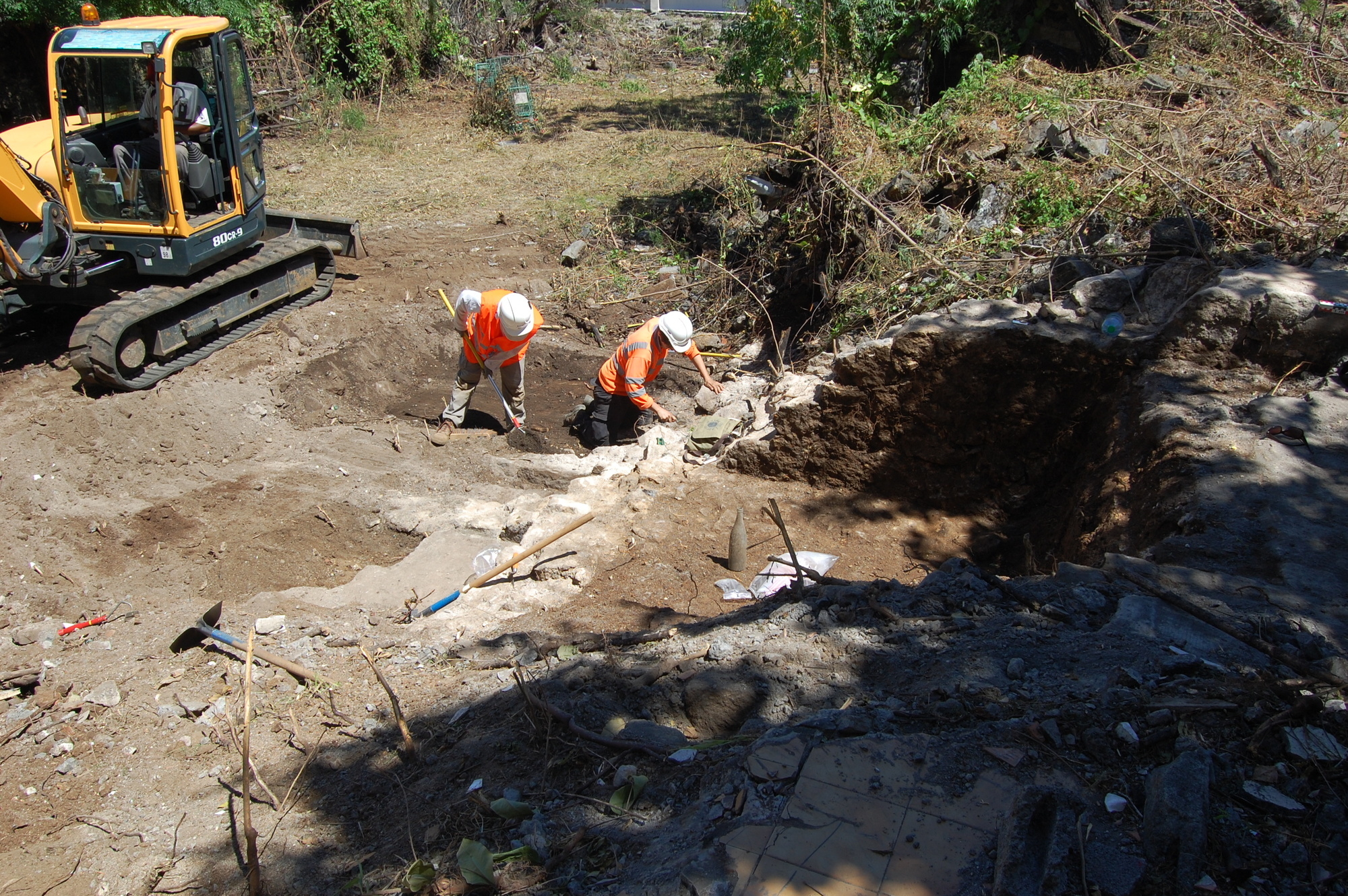
- Home
- Archaeology on Reunion Island
- Sites
- Saint-Pierre
- Maison de Canonville
An archaeological evaluation of the area around the Maison de Canonville at Saint-Pierre in 2015 enabled archaeologists to record the remains of a former rum warehouse and other evidence of the site’s occupation.
An archaeological operation performed as part of a rehabilitation programme
The house was built in the oldest part of Saint-Pierre, along rue Babet. This road provided rapid access to the seafront and to the mouth of the Abord River and the merchant warehouses. Built in 1800 within a block laid out in 1775, the house was designed for commercial use. The archaeological evaluation was mounted when the town hall announced its plans to renovate the building, which is listed as a historical monument.
Information on the history of the built block
The operation revealed the remains of a relatively early occupation, including block alignments that may reflect how the street block was initially laid out along with finds dating from the 18th century onwards. There were also two lime pits, structures contemporary to the construction of the buildings and a dump in use in the 19th and 20th centuries. The most extensive remains were the ruins of a building constructed on the break in a slope between two terraces. The main body of the ‘case’ or cottage in the northern section was built on rubble while this annexe was constructed over cellars. The buildings were linked by a covered passage. This archaeological evidence was completed by written archival documents dating from 1820 and 1913, which mention its use as a central rum depot. The main ‘case’ served as accommodation for the depot record-keeper and the annexe building was used as the warehouse.
Associated media
Open Media Library

Warehouse ruins (Saint-Pierre, Maison de Canonville, 2015)

General plan (Saint-Pierre, Maison de Canonville, 2015)

Plan of test trench 5 (Saint-Pierre, Maison de Canonville, 2015)

Paving in test trench 5 (Saint-Pierre, Maison de Canonville, 2015)

Buried room in test trench 7 (Saint-Pierre, Maison de Canonville, 2015)

